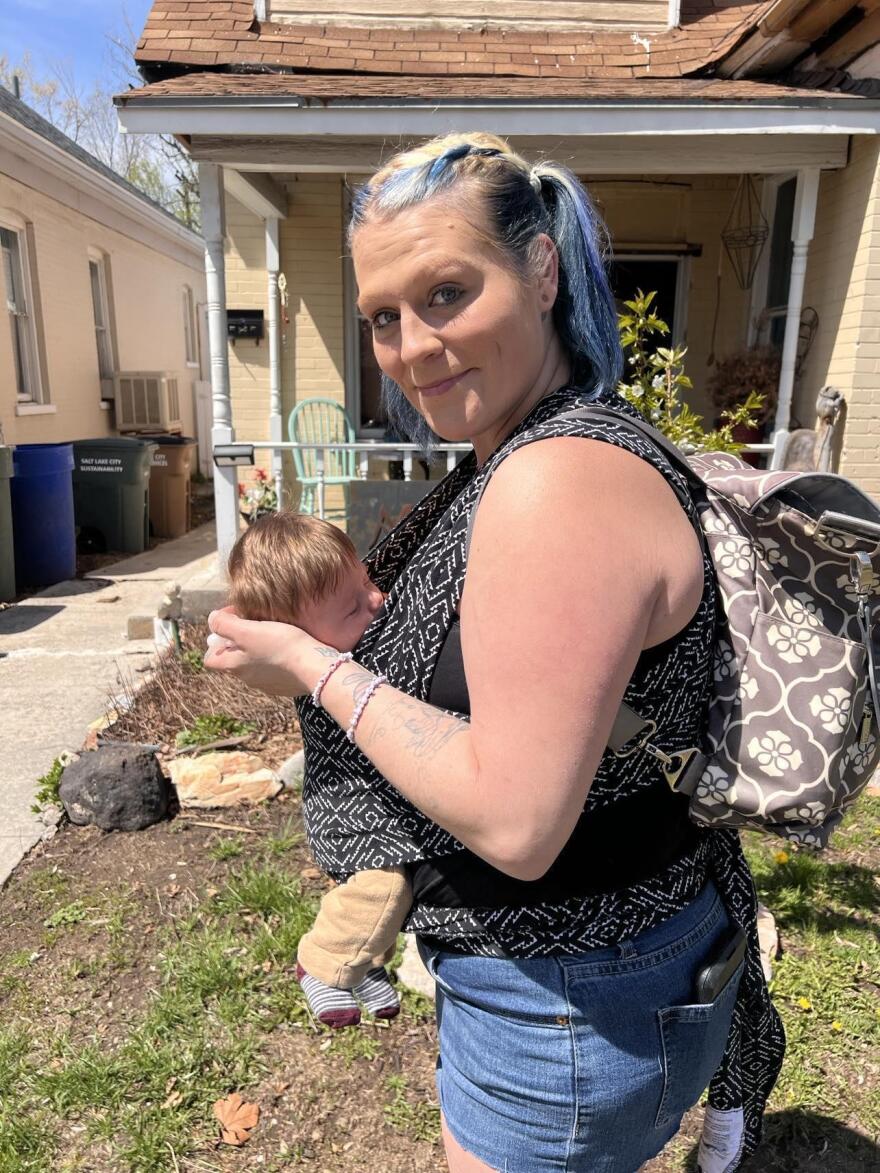Brandee Woodard was afraid she’d be bringing a baby into the world without a place to call home.
In February 2023, she gave birth to her son Kendall.
During the majority of her pregnancy, Woodard was living on the streets.
“I was actually really scared that I would end up having him and have to go back to the tent,” said Woodard.
There was a two-month period when she and her boyfriend Micheal were staying with some friends, but it didn’t last very long.
“And then he, our friend, got evicted, so we ended up back out on the streets.”

Woodard said she never went to a shelter because of the possibility of getting into an altercation with someone.
“I won't do the shelter thing. He [Micheal] has before, but I won't do it. My mom stayed in a shelter and I just heard horror stories about them so I'd just rather, I guess, almost be out on the streets.”
Woodard was living in a tent and 8-months pregnant when she met the outreach team from non-profit Nomad Alliance. This was during the annual census of people experiencing homelessness in January 2023.
The team connected her with one of the organization's volunteers who had an open room to rent in a six bedroom Salt Lake City house.
That’s where all three are living now, but the room isn’t free. They’re on the hook for a $650 rent payment. Her boyfriend does odd jobs around the house to knock down the price.
“There's no drugs, there's no alcohol there. So, it's a safe place. It's taken a lot of stress off of me. Like, I don't think I've ever been this stress free in my life,” Woodard said.
A December 2022 report by the Utah Women and Leadership Project found some of the primary factors that lead an individual into homelessness include physical disability, mental and physical health and substance abuse.
Woodard said she became homeless after losing her disability benefits.
The UWLP study also points to domestic violence.
That’s how Hanna Haas ended up without a home. She was pregnant with her daughter when she left what she said was an abusive relationship. Haas also has a six and a four-year-old.
After a brief stay at a women's domestic violence shelter she was referred to Family Support Center's LifeStart Village in Midvale. It’s a transitional housing program for single parents to help them achieve self-sufficiency.
“I just felt like I needed to get me and my children to a safer place — especially my newborn daughter,” Haas explained. “I was pregnant with her at the time and experiencing domestic violence. And so I went to a homeless shelter, and then I ended up coming here and I had nothing for my kids. And then they helped me get everything that I needed.”
Haas moved in around the beginning March 2023. She said the housing came just in the nick of time. Her daughter was born two days after moving in.
“They kind of knew the severity of the situation. They worked really, really hard — he staff here did — to get me in,” said Haas.
The first year of life is the most common time for a person in the United States to experience homelessness.
A report from Crossroads Urban Center states that in Utah in 2022, 875 children ages six and under received homeless services, and 366 families with children were homeless six months or longer.
“I mean, it's just a really hard time. And so for people who don't have parents they can move back in with, there's not another safety net a lot of the time,” said their deputy executive director Bill Tibbitts.
The Utah Department of Health and Human Services told KUER they do not track the number of Utah children born into homelessness.
Across the country, The Homemore Project reports that 1 in 30 children face homelessness each year.
Lingering effects of homelessness in children can impact their performance in school and lead to higher levels of behavioral problems and increased risks of health issues.
“If you don't take care of children when they're homeless, they'll grow up and have only known homelessness. And then you have them being homeless with their kids 20 years from now,” Tibbitts said.
Tibbitts said Salt Lake County needs a second shelter for homeless families, and that state and local leaders need to focus on ways to get families with children out of shelters after six months and into supportive housing.
On June 30, the Utah Homelessness Council voted to spend $3 million dollars to build a second emergency shelter in Salt Lake County to accommodate families with children. The funding had already been allocated back in December 2022 with the intention of providing shelter for medically vulnerable people.
In a tweet, Tibbitts called it a huge step towards making sure kids aren’t turned away from shelters in the future.
In the meantime, Hanna Haas said she's planning to stay at the LifeStart Village as long as she can to give her kids stability in a safe place.
“I've actually been enrolled in college, and I've been working towards getting employment.”
As for Brandee Woodard, she's on a waiting list for permanent housing. For now, having a roof over their head has made all the difference.
“I felt like, I don't know, the weight of everything got lifted off my shoulders.”






